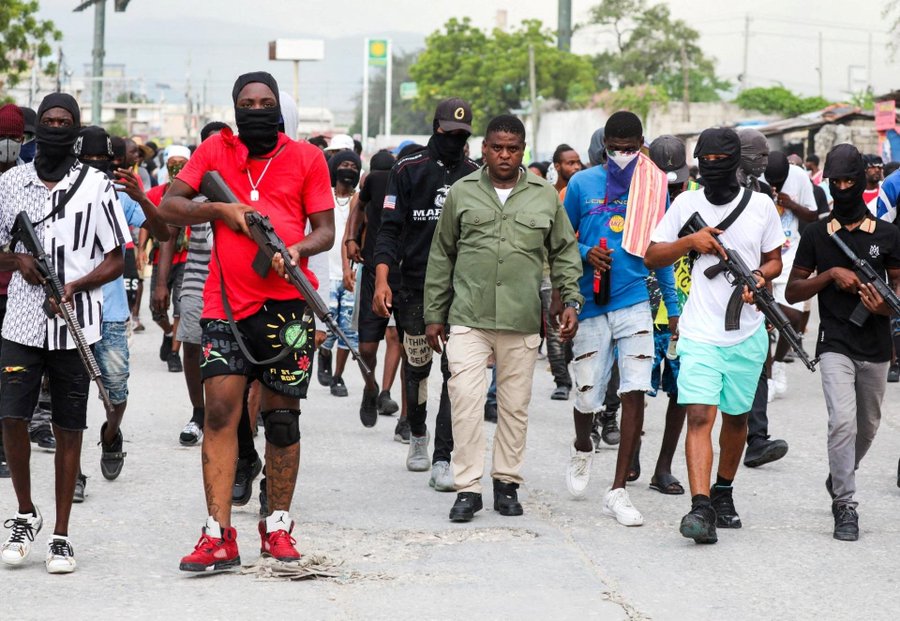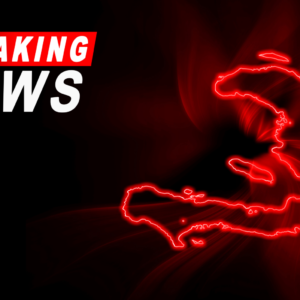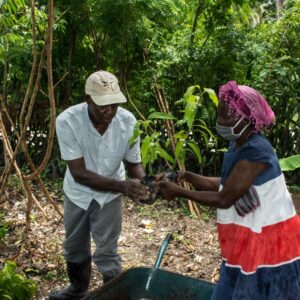But why can’t we exploit Haiti’s oil and alleviate the misery of the Haitian people, asks Chevallier Jedi of the independent and progressive Quebec newspaper “L’aut’ Journal”?
The Canadian newspaper claims the reason is political.
Haiti, he believes, is considered the backyard of the Great Neighbor. Haitian oil is included in their reserves in case of a global shortage caused by war or the depletion of this non-renewable natural resource on other continents, he notes.
This analysis by the Quebec media, which dates back about ten years, sheds some light on another question that has been plaguing the minds of the population, which has been confronted for more than three years with planned and programmed violence in Haiti: Why are the leaders of criminal gangs with ties and sapâtes so protected in Haiti and what is the fundamental mission entrusted to them?
However, to understand the roots of the impunity and protection enjoyed by gang leaders in Haiti such as Vitelhomme, Izo-5Segond, Barbecue, Lanmo 100Hou and all those identified by Canada and the United States as financiers and accomplices of armed criminal gangs, it is not necessary to go back to the records of the actions of the Directors of the PNH, Elbe, Rameau, Léon Charles or the de facto Prime Ministers Ariel Henry, Jouthe, Claude Joseph and Conille, all put in place with the help of the Core Group countries, in the face of armed gangs.
To do this, we only need to look at the recent behavior of La Ferronay (Gressier), soldiers from the FAd’H military base remained unresponsive despite the episodes of armed violence recorded in Gressier and considered the suspicious attitude ofKenyan police officers patrol areas not exposed to gang violence. Neighborhoods controlled by gang bosses remain free from intervention by Kenyan forces.
And after noting that the Kenyans, just like the soldiers of the FAd’H, obey the same order-givers as Conille and Rameau, one must ask what important tasks do the gang leaders carry out that have made them so invisible and untouchable for so long?
What secret mission can justify such protection? Are the areas selected for the activities of criminal gangs in Haiti the result of chance?
Is there a relationship between Haiti’s mining and gas mapping and the location of criminal gangs?
Certainly gangs have a political function. Their leaders are protected for one main reason: Haiti is not that poor.
And it is Jedi Knight of “l’autre Journal” who demonstrates it in a text published more than 10 years ago under the title “Haiti not so poor as that”. To read or reread.
By searching a little on the web, one can find a large number of indicators which explain that Haiti, the smallest part of Hispaniola (the other, and largest part of the island, being the Dominican Republic or Santo Domingo) represents an enormous potential in oil resources, gold, but also in Iridium (rare metal of the Platinum group which is currently used in the military industry: nuclear missiles, but also in the development of the industry linked to the conquest of space: rockets, orbiting systems, etc.)
In light of these elements, one could easily deduce that the will and energy deployed by Washington to rapidly deploy between 12,000 and 15,000 soldiers on Haitian soil in a mission which, as announced by the US military high command, will continue in the long term.
In the 1970s, geophysical work was undertaken at various points in Haiti. The drilling indicated the presence of oil and gas, indicating the existence of petroleum.
Oil reservoirs have been located in marine sediments between 6,000 and 7,000 meters deep in the Gonâve Channel and specifically in Rochelois Bay on Gonâve Island.
Areas of potential interest include the Central Plateau, the land portion of the Plaine du Cul-de-Sac, and Grande Caïmite. “The current state of accumulated knowledge on Haiti’s oil potential is sufficiently satisfactory to attract investment,” concludes Report No. 3 of the Haitian Mines Bureau.
But why can’t we exploit Haiti’s oil and alleviate the misery of the Haitian people?
The reason is political. Haiti is considered the backyard of the Big Neighbor (the USA, of course). Haitian oil is included in their reserves in case of a global shortage caused by war or the exhaustion of this non-renewable natural resource on other continents.
In 1949, the government of Dumarsais Estimé had already attempted to exploit Haitian oil deposits by calling on the “Atlantic Refining Company” (ATRECO). The drilling work was carried out with the assistance of the Ministry of Agriculture and Natural Resources and Rural Development under the supervision of Agronomist Jean David.
Even today, if you go to the town of Caradeux, between the International Airport and Petion-Ville, you can see traces of the derricks. The mouth of the well is sealed with a copper plate bearing the drilling date and the name of ATRECO.
Washington gave a formal order to immediately stop work, ATRECO was compensated. Goodbye Haitian oil!
It is not superfluous to mention that in 1975 the government of Jean Claude Duvalier called on Crux Limited to explore the said oil resources identified in the harbor of Port-au-Prince near La Gonâve, as well as in Grande Saline.
INAREM or the National Institute of Mining Resources, whose coordinator was Henri P. Bayard, began research for nearly 6 months from Port-au-Prince to the Dominican border as the possible area of the drilling undertaken by ATRECO in the Plaine du Cul-de-Sac.
This well is located on the local road that leaves Caradeux to go to the Ste Marie chapel in Pétion-ville.
Samples were taken and analyzed in the laboratory of the Bureau of Mines. Engineers established the existence of an underwater oil slick contiguous to the oil fields of Venezuela (the capacity of this slick is estimated by some to be 5 times greater than that of its continental neighbor).
Once again, Crux Limited Company was forced to abandon exploration work, for the same reasons as ATRECO in 1949.
A few years later, a Haitian geological engineer and Minister of Mines attempted to resume work in concert with the Venezuelan authorities, and if it were not for the vigilance of the Venezuelan police, he would have died following an assassination attempt in the hotel room where he was staying during his stay in Venezuela to finalize the agreements.
In addition, the former president of the Dominican Petroleum Refinery (REFIDOMSA), Leopold Espaillat Nanita, explained that one of the solutions for the Haitian state to get out of this endless external debt, but also, in order to solve its socio-economic problems, would be found in the exploitation of these gold deposits as well as those of other minerals that the neighboring territory of the Dominican Republic possesses.
Espaillat Nanita revealed that geological studies and research carried out on Haitian soil indicate that this nation jointly possesses with Santo Domingo, possibly the largest unexploited gold deposit in the world.
Similarly, there is a deposit (second only to South Africa, the world’s main supplier) of a little-known mineral: iridium, used in the construction of space shuttles, tactical missiles and other devices. These two resources are sufficient to alleviate the “poverty” of the Haitian people…
Espaillat Nanita, who is also an architect, denounces the fact that these resources are little known because of a “conspiracy” of multinationals, which claim to take away Haitians’ natural wealth.
The former president of REFIDOMSA said that in this “conspiracy” are involved certain pro-US holdings but also state officials who are dedicated to maintaining poverty and destitution in Haiti.
In this sense, he supports the statements of the very recent Prime Minister-designate, Jean-Max Bellerive, on the search for new alternatives that will facilitate the creation of jobs and attract foreign investors to the smaller of the two countries that share the island of Hispaniola instead of relying exclusively on the Dominican Republic.
Espaillat recognizes that there exists in Haiti a nationalist class formed mainly of politicians and intellectuals – to which Bellerive belongs (appointed Prime Minister on October 30, 2009 by President René Préval) – interested in seeing Haiti’s problems find solutions on its own territory and not in another part of the world, such as its neighbor (Santo Domingo).
The former energy official made these statements during an interview conducted by the radio program “Dejando huellas” on Dominicana FM.
Read the original text with: https://lautjournal.info/20100222/ha%C3%AFti-pas-si-pauvre-que-cela
Similar articles






